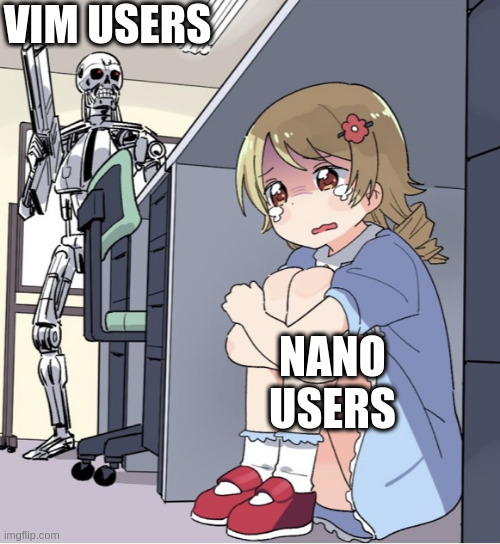this post was submitted on 02 Sep 2024
791 points (93.5% liked)
Linux
48316 readers
704 users here now
From Wikipedia, the free encyclopedia
Linux is a family of open source Unix-like operating systems based on the Linux kernel, an operating system kernel first released on September 17, 1991 by Linus Torvalds. Linux is typically packaged in a Linux distribution (or distro for short).
Distributions include the Linux kernel and supporting system software and libraries, many of which are provided by the GNU Project. Many Linux distributions use the word "Linux" in their name, but the Free Software Foundation uses the name GNU/Linux to emphasize the importance of GNU software, causing some controversy.
Rules
- Posts must be relevant to operating systems running the Linux kernel. GNU/Linux or otherwise.
- No misinformation
- No NSFW content
- No hate speech, bigotry, etc
Related Communities
Community icon by Alpár-Etele Méder, licensed under CC BY 3.0
founded 5 years ago
MODERATORS
you are viewing a single comment's thread
view the rest of the comments
view the rest of the comments

Not in rescue mode. If you can't mount your root partition because something was fudged in /etc/fstab, for example, you may be stuck in recovery and depending on your distribution, it may not have nano in that minimalist mode.
For me it also happens when I install a VM of Debian using the small image, on my dedicated server in a data center. The company hosting the server requires a special network configuration and AFAIK, there's only vi. So i need to use the console to access the VM and from there, edit /etc/network/something with vi to setup the network. Once done I can reboot and install the rest of the software over the network, including nano.
I've been using Linux for more than two decades. Before nano I was using pico, but it also required to have pine/alpine installed. So knowing the basics of vi has often been helpful over the years for me.
Maybe it's because I like tinkering with VMs and SBCs, and most people will not encounter situations where they don't have nano, but it can happen. And you'll be glad to know at least "i" and ":wq!".